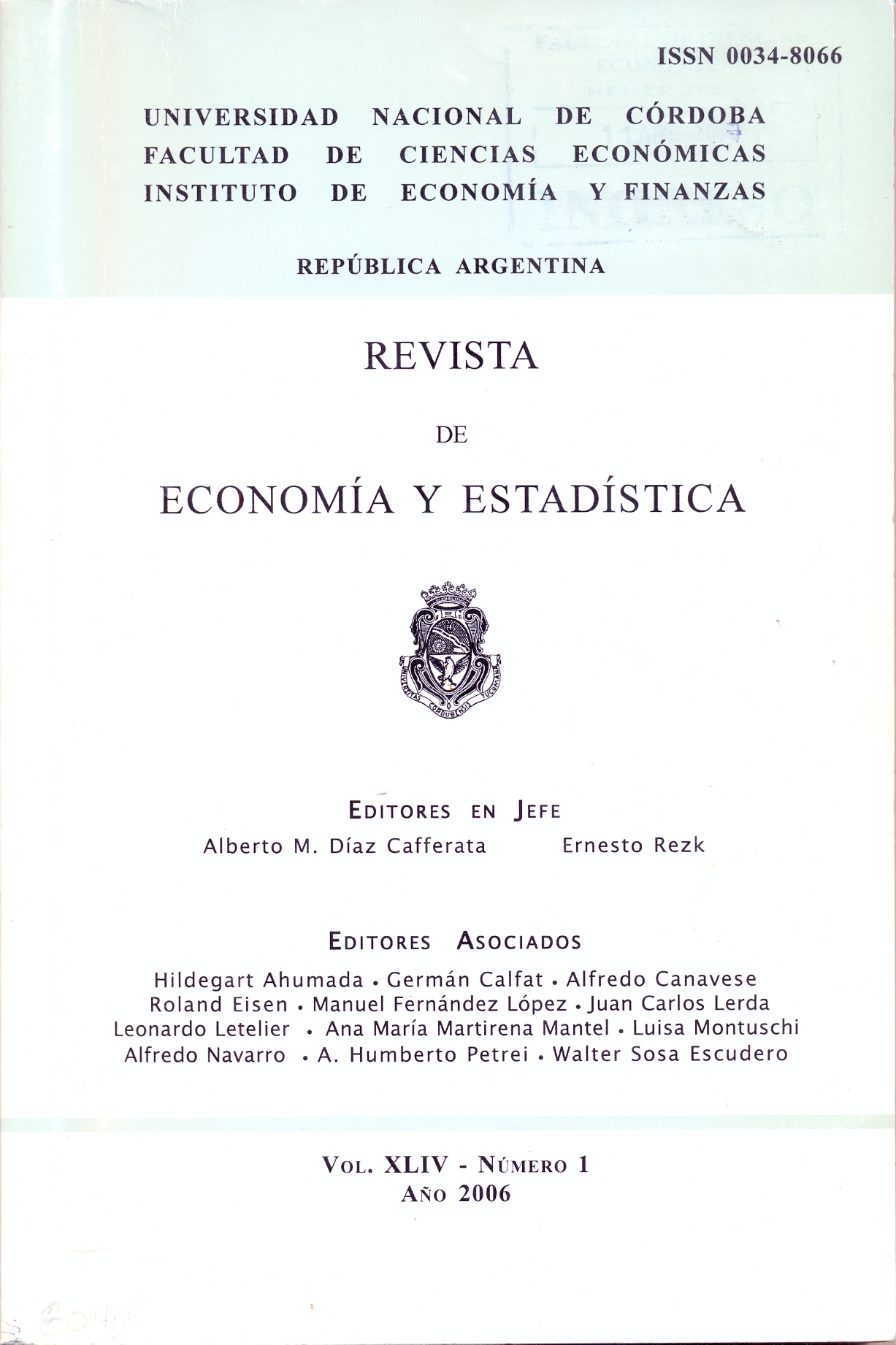25 Años de Política Económica en EE.UU
DOI:
https://doi.org/10.55444/2451.7321.2006.v44.n1.4089Keywords:
historia económica, Estados UnidosAbstract
En este artículo se presenta la historia económica reciente de los Estados Unidos. En concreto se analizan los siete últimos mandatos presidenciales, desde Ronald Reagan (elegido por primera vez en 1980) a George W. Bush (reelegido por segunda vez en 2004). El artículo se compone básicamente de 3 partes claramente diferenciadas. En la primera se analizan las políticas económicas llevadas a cabo por el tándem Ronald Reagan- George Bush. En la segunda, se presentan los logros económicos de la presidencia demócrata de Bill Clinton. En la tercera, y última, se comenta la presidencia de George W. Bush y, finalmente, se plantean los retos que la economía norteamericana presenta de cara al futuro.Downloads
Downloads
Published
Issue
Section
License
Copyright (c) 2006 Saturnino Aguado Sebastián

This work is licensed under a Creative Commons Attribution-NonCommercial-NoDerivatives 4.0 International License.
Authors who have publications with this journal agree to the following terms:
Authors retain their copyright and grant the journal the right of first publication of their work, which is simultaneously subject to the Creative Commons Attribution-NonCommercial-NoDerivatives 4.0 International License that allows third parties to share the work provided that its author and first publication in this journal are indicated.
Authors may adopt other non-exclusive licensing arrangements for distribution of the published version of the work (e.g. depositing it in an institutional telematic archive or publishing it in a monographic volume) as long as the initial publication in this journal is indicated.
Authors are allowed and encouraged to disseminate their work via the Internet (e.g. in institutional telematic archives or on their website) before and during the submission process, which can lead to interesting exchanges and increase citations of the published work. (See The Open Access Effect)










